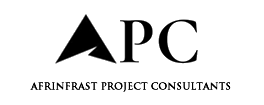
A new Competence Framework for specialist timber fire door installers has been launched by the CITB under the work of the Industry Competence Steering Group – Sector Led Group 10. Richard Kowalski, technical manager for doors at Stairways Midlands, explains why this marks a pivotal moment for the sector
What does it mean to be competent to install a fire door? It’s a question that has long challenged the construction industry – with potentially dangerous consequences. Fire doors are life-saving safety devices, required by law in many buildings to help prevent the spread of fire and smoke. Regulations state they must be installed by a “competent person” – but what that actually means has remained something of a grey area.
That’s now changing. The SLG10 – Installation and Maintenance – Envelope and Interiors Super Sector programme** has developed a comprehensive Competence Framework for Site Carpenters & Specialist Timber Fire Door Installers, in partnership with sector bodies like the British Woodworking Federation and a cross-section of industry experts – including Stairways’ Richard Kowalski. With over 25 years’ experience and a place on both the Fire Door Alliance and BWF committees, he has long championed the need for meaningful competency standards in fire door installation.
The status quo?
While no mandatory qualification is required to install a fire door, expertise is certainly needed. The Regulatory Reform (Fire Safety) Order 2005 (RRO/FSO) only sets out that fire doors should be installed by a “competent person.”
Voluntary third-party certification schemes for installation contractors such as FIRAS, run by Q-Mark, or Certifire certification, have sprung up to fill the regulatory gap.
However, without clear industry-wide standards, there is a mixed bag out there in terms of uptake, says Kowalski. “While some installers have opted for that high-standard certification, others still believe that an online course makes them a competent person.”
The industry has been improving, but evidence of previous poor practice is still coming to light.
Kowalski explains: “With the changing regulatory requirements around ongoing inspection and maintenance of fire doors in recent years, we have seen a number of projects completed over the past decade revisited – uncovering fire doors that were never installed correctly and would never have been viable or compliant.
“We’ve even seen building inspectors go in and pull off the architrave and find there was no mastic at all between the frame and the structural opening in any of the doors. Fire will find the weakest point. In this case, they almost might as well have left the door open!”
The new framework
Published in July and out for consultation, the new Specialist Timber Fire Door Installer Competence Framework outlines the training and qualification landscape and the essential skills, knowledge, experience and behaviours (SKEB) for a site carpenter and specialist timber fire door installer.
It has been created by the Super Sectors** in partnership with a broad cross-section of industry figures, from manufacturers such as Stairways to training bodies and on-site professionals.
It was a meaningful collaboration, explains Kowalski: “I think a number of us came to the table with the idea that we needed a strict regulatory framework, as we see in other safety-critical sectors – mandatory membership of the Gas Safe Register for gas engineers, for example. But the more we talked about it, the more we came to see that such an inflexible system wouldn’t work for our industry.
“We needed to capture the diversity of pathways into fire door installation competency – whether that’s years of on-site experience, a formal qualification or third-party certification. This sector changes constantly – documents change, standards change – so it was about how installers can develop and demonstrate experience and skills.”
What emerged was the concept of a competency portfolio – a flexible, live record of an individual’s learning and experience.
“It’s not just about having a certificate,” says Kowalski.
“It’s about demonstrating competency in the real world – the training you’ve done but also the projects you’ve worked on – it can include things like inspection sheets, photos and customer feedback.”
Importantly, the framework also includes behaviours alongside technical knowledge and skills.
“The expectation to speak up when you see something wrong, for example,” Kowalski adds. “Things like that support a culture of accountability and professionalism.”
Raising awareness
While the framework is a major step forward, it’s not without its challenges.
“Yes, it means more paperwork,” Kowalski acknowledges. “Yes, some people will want to avoid it. But the companies and individuals who want to do it right will adopt it. And clients who want to get it right will do their due diligence and start requiring it. That’s how change happens. The CITB is running events and consulting but there is a lot of ground to cover – not just among installers but also site managers, contractors and developers.
“As manufacturers, we also have our part to play. At Stairways, we take our responsibility seriously, not only to get the product right but also to offer additional downstream support – installation guides and ‘toolbox talks’ for carpenters and installers, for example. We’ll be banging the drum for this new competency framework too!”
The future
The hope is that over time, the Route to Competence, including regular CPD and the portfolio of evidence, will become a standard expectation – an installer’s ‘passport’ that proves they’re up to date, experienced and safe.
Kowalski adds: “The Competence Framework for a Specialist Timber Fire Door Installer marks a turning point – long overdue recognition of the crucial role fire door installers have in keeping people safe – and the standards of knowledge, skills and professionalism that must therefore apply.”
**The Industry Competence Steering Group (ICSG) was formally launched in December 2024). It is made up of 15 different working groups, representing all of construction and the built environment, with the agreed goal of creating competence frameworks. Sector Lead Group 10 represents Installation and Maintenance. A programme of roll out was created, called the Super Sector Programme, comprising five categories: Envelope, Engineering Services, Interiors, Civils and Structures. The Specialist Timber Fire Door Installer Competence Framework was developed by the SLG10 – Installation and Maintenance – Envelope and Interiors Super Sector programme.
For more, or to comment on the new framework, click here.
The post A new standard for safety: Defining competency in fire door installation appeared first on Planning, Building & Construction Today.

